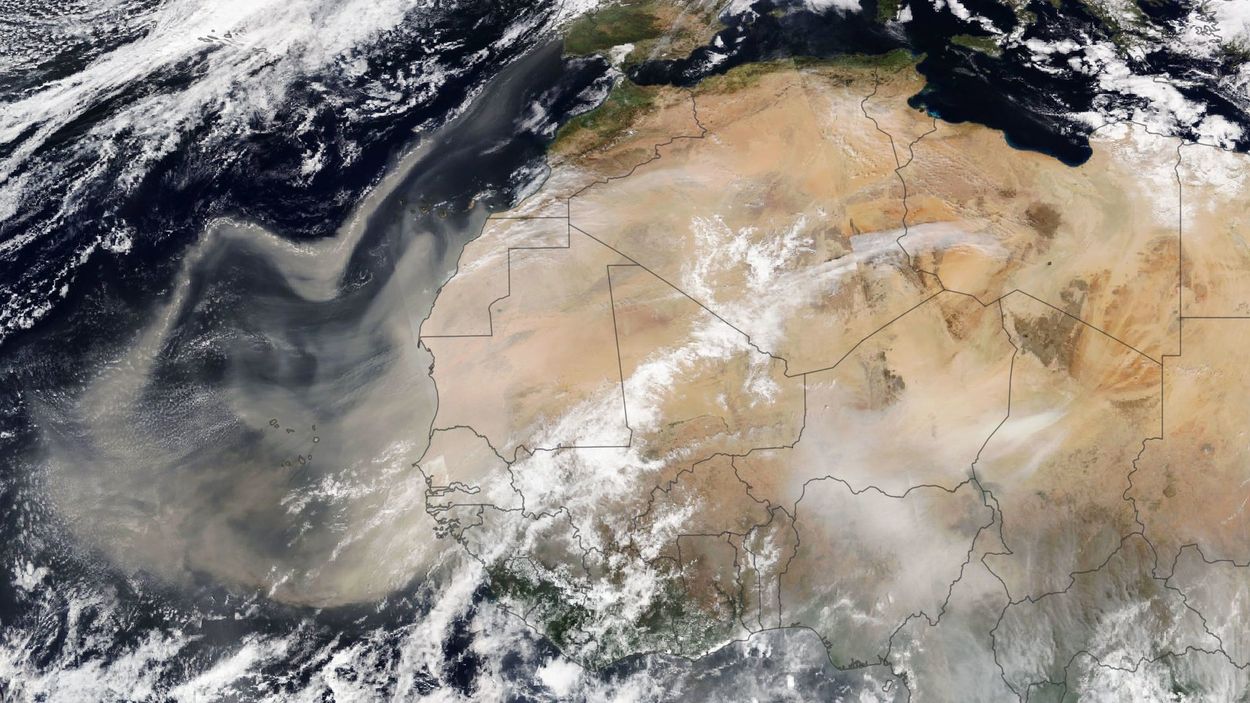
Did you know that Saharan dust travels thousands of miles across the Atlantic Ocean? This incredible journey impacts weather, ecosystems, and even human health. Saharan dust consists of tiny particles lifted from the Sahara Desert by strong winds. These particles can reach as far as the Americas, affecting air quality and visibility. Interestingly, Saharan dust plays a crucial role in fertilizing the Amazon rainforest by providing essential nutrients. It also influences hurricane formation in the Atlantic. However, Saharan dust can cause respiratory issues for people with allergies or asthma. Understanding this natural phenomenon helps us appreciate its global significance.
What is Saharan Dust?
Saharan dust consists of tiny particles from the Sahara Desert in Africa. These particles travel across continents, affecting weather, climate, and even health. Let's dive into some fascinating facts about this natural phenomenon.
How Far Can Saharan Dust Travel?
Saharan dust can travel thousands of miles, crossing oceans and continents. This journey impacts various regions in surprising ways.
- Saharan dust can reach the Americas. Winds carry these particles across the Atlantic Ocean, reaching the Caribbean, South America, and even the United States.
- It affects Europe too. Dust from the Sahara can travel northward, impacting air quality and visibility in southern Europe.
- Particles can reach as far as the Arctic. Some dust particles have been found in the Arctic, showing just how far they can travel.
How Does Saharan Dust Affect Weather?
Saharan dust plays a significant role in weather patterns. Its presence can alter atmospheric conditions in multiple ways.
- It can suppress hurricanes. Dust particles absorb sunlight, warming the air and creating a more stable atmosphere, which can inhibit hurricane formation.
- Dust can cool the atmosphere. By reflecting sunlight back into space, Saharan dust can lead to cooler surface temperatures.
- It influences rainfall. Dust particles can act as cloud condensation nuclei, affecting cloud formation and precipitation patterns.
What Are the Environmental Impacts of Saharan Dust?
Saharan dust has both positive and negative effects on the environment. Its influence extends to various ecosystems.
- It fertilizes the Amazon Rainforest. Nutrients in the dust, like phosphorus, help replenish soil fertility in the Amazon, supporting plant growth.
- Dust can harm coral reefs. When dust settles in the ocean, it can carry pathogens that damage coral reefs, affecting marine biodiversity.
How Does Saharan Dust Affect Human Health?
Saharan dust can have significant health implications, especially for those with respiratory conditions.
- It can worsen respiratory issues. Fine particles in the dust can penetrate deep into the lungs, exacerbating conditions like asthma and bronchitis.
- Dust can carry allergens and pathogens. These particles can transport allergens and harmful microorganisms, potentially causing allergic reactions and infections.
The Impact of Saharan Dust
Saharan dust isn't just a nuisance; it's a global player. This dust travels thousands of miles, affecting air quality, weather patterns, and even ocean health. It can fertilize the Amazon rainforest, but also cause respiratory issues for people. The dust's journey across the Atlantic is a natural phenomenon that has been happening for millions of years, shaping ecosystems far from its origin.
Understanding these facts helps us appreciate the interconnectedness of our planet. From influencing hurricane formation to providing nutrients to distant lands, Saharan dust is a reminder of nature's complexity. Next time you see a hazy sky, think about the incredible journey those tiny particles have made. It's a small world, after all, and every grain of dust has a story to tell.
Was this page helpful?
Our commitment to delivering trustworthy and engaging content is at the heart of what we do. Each fact on our site is contributed by real users like you, bringing a wealth of diverse insights and information. To ensure the highest standards of accuracy and reliability, our dedicated editors meticulously review each submission. This process guarantees that the facts we share are not only fascinating but also credible. Trust in our commitment to quality and authenticity as you explore and learn with us.
